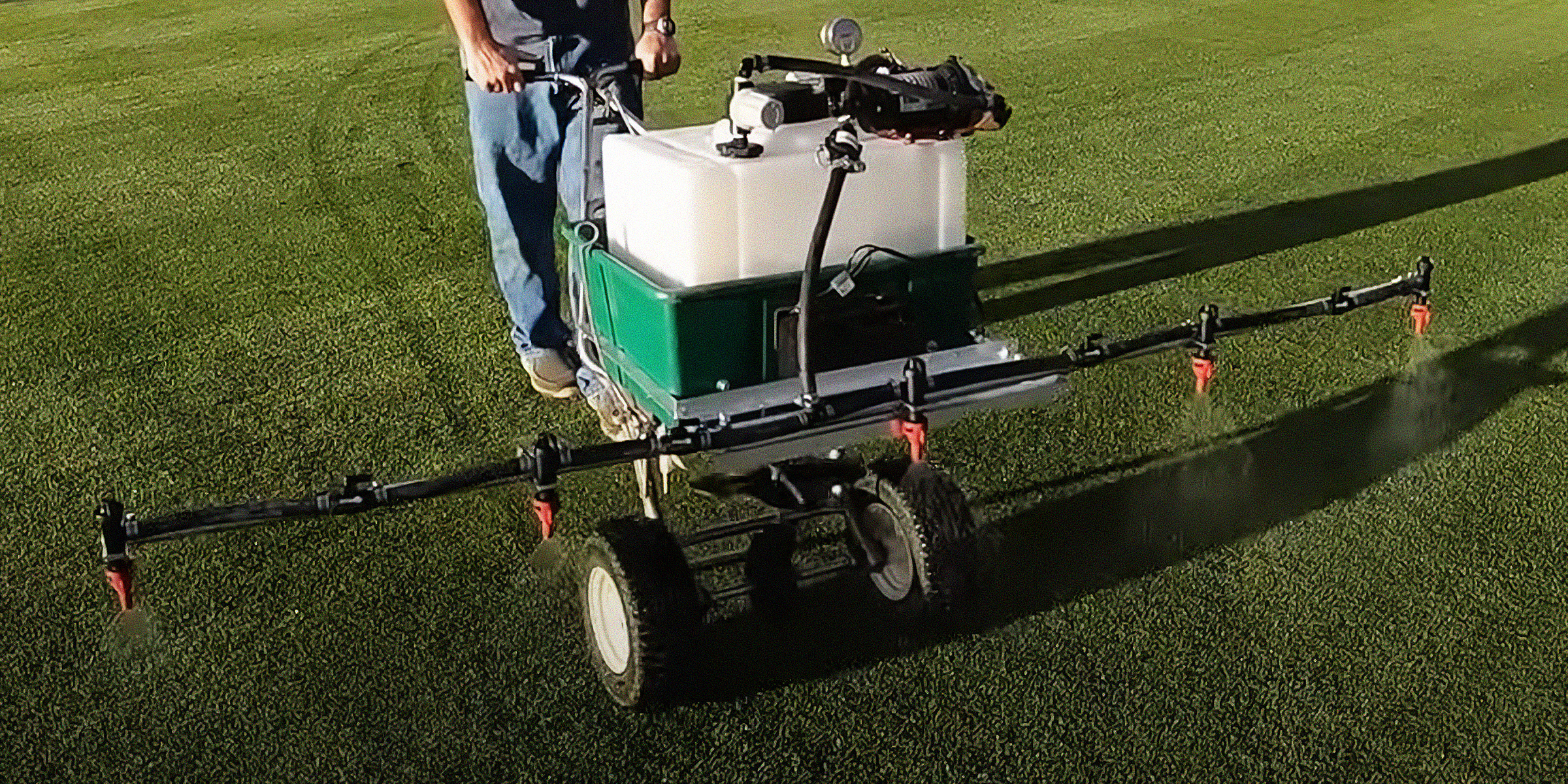
DIY Boom Sprayer — A Step-by-Step Guide for Gardeners

Whether you're a seasoned DIY enthusiast or new to the world of homemade gadgets, continue reading for a step-by-step tutorial that will help you create a functional and reliable DIY boom sprayer.
A DIY boom sprayer is an invaluable tool for anyone looking to take their lawn care to the next level. Not only does a homemade boom sprayer save you the expense of commercial models, but it also allows for customization to suit your specific lawn size and spraying needs.
With a bit of ingenuity, some basic materials, and this guide, you can assemble a DIY boom sprayer that rivals any store-bought version in functionality and efficiency.
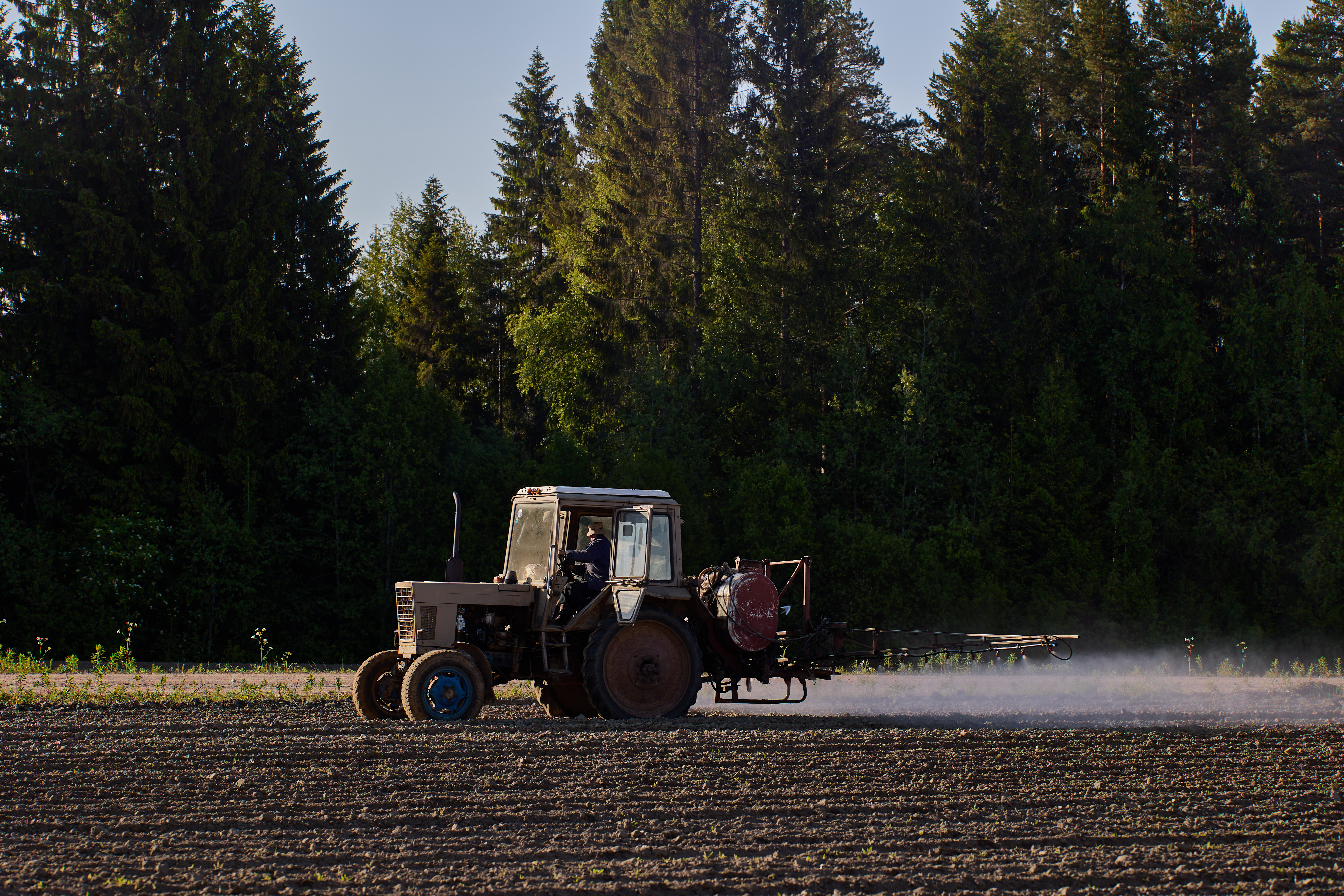
A tractor using a boom sprayer to apply herbicides to a potato field. | Source: Getty Images
DIY Boom Sprayer: A Step-by-Step Guide
Creating a DIY boom sprayer from PVC only involves 7 steps to ensure efficient and wide coverage for lawn care or agricultural applications. Find a detailed guide below:
What You'll Need:
- Plastic tank
- Pump
- Battery
- Pressure-relief valve
- On-off valve
- Filter
- PVC hose
- Aluminum pipe
- Nozzle bodies
- Nozzles
- Spray tips
- Burb filling
- Teflon tape
- Stainless steel clamps.
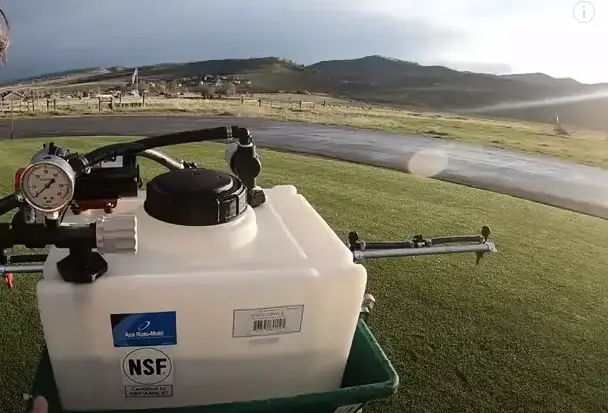
A DIY boom sprayer | Source: YouTube/Connor Ward
Directions:
1. Mount the pump on the plastic tank.
Select a pump based on your lawn size. A 25 to 30-gallon tank with a standard 12-volt pump is usually efficient for areas up to two acres.
Mark and drill holes in the tank to attach the pump securely using screws and flush nuts.

Mount the pump to the tank by marking and drilling holes to secure the pump using nuts and screws. | Source: YouTube/Connor Ward
2. Install the pressure-relief valve.
This valve controls the spraying pressure and directs excess liquid back to the tank. Install it by drilling a hole atop the tank, using Teflon tape on threads to prevent leaks, and attaching it with screws, nuts, and a hose to the barb inside the tank.
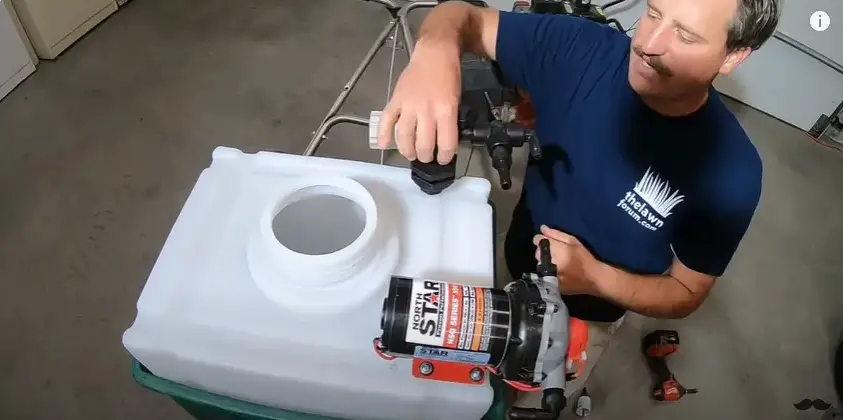
Install the pressure relief valve by drilling a hole atop the tank, using Teflon tape, screws and nuts. | Source: YouTube/Connor Ward
3. Install the inline filter.
To prevent blockages, drill a hole near the pump to fit the inline filter. Secure it with Teflon tape and hose clamps, connecting it to a feeder tube inside the tank.
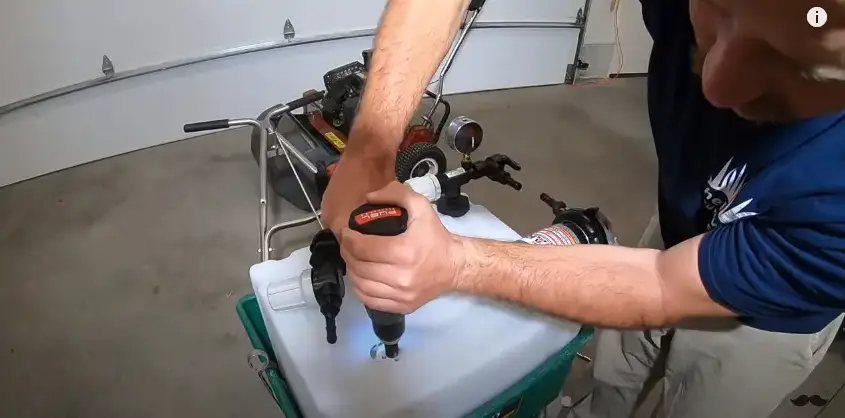
Drill a hole near the pump to install the inline filter. | Source: YouTube/Connor Ward
4. Build the boom.
Construct the boom using a PVC hose, aluminum pipe, a nozzle kit, and clamps. Cut equal pieces of PVC hose to match the nozzle length, attach spray tips to the nozzles, and secure them to the aluminum pipe, ensuring even spacing for efficient spray coverage.
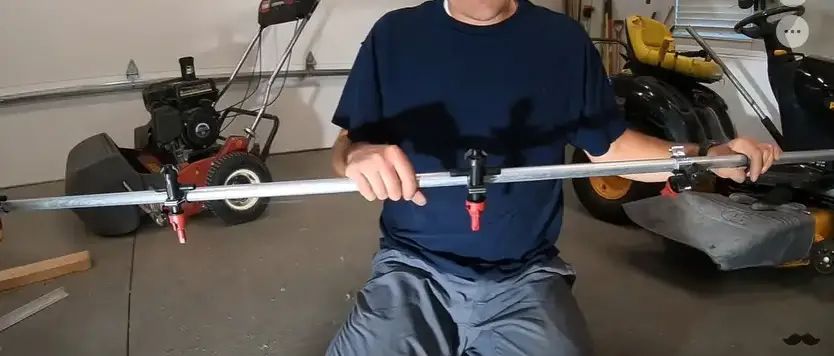
Construct the boom. | Source: YouTube/Connor Ward
5. Position the tank on a pull-behind cart.
Secure the fully assembled tank and sprayer onto a cart for easy attachment to a lawn mower. Adjust the tank height as needed for optimal spraying coverage and secure the boom onto an aluminum frame on the cart.

Place the DIY boom sprayer onto a cart. | Source: YouTube/Connor Ward
6. Connect all parts.
Ensure the pump, filter, valve, and boom are properly connected. Attach hoses between the strainer, pump, and pressure relief valve to form a circuit, and link the boom sprayer to the valve for easy detachment.
7. Link the battery to the pump.
Finally, power your sprayer by connecting a compatible battery to the pump. Secure the battery on the cart and install a switch for easy operation and your DIY boom sprayer is ready for use.
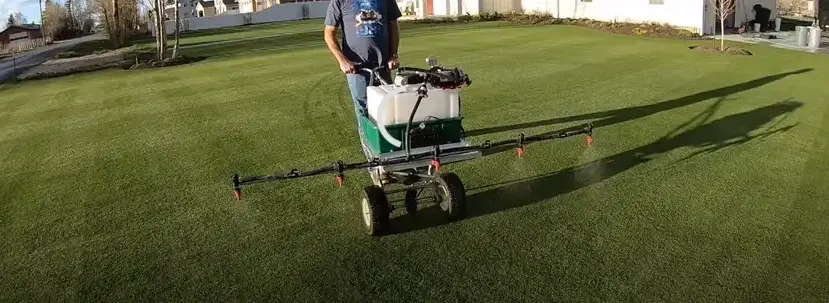
A DIY boom sprayer. | Source: YouTube/Connor Ward
Building your own boom sprayer is a rewarding project that enhances your lawn care regimen. By following these steps, you can create a customized sprayer that meets your specific needs, offering flexibility and control over your lawn maintenance.
For more DIY projects, check out this guide for a DIY deer hoist.